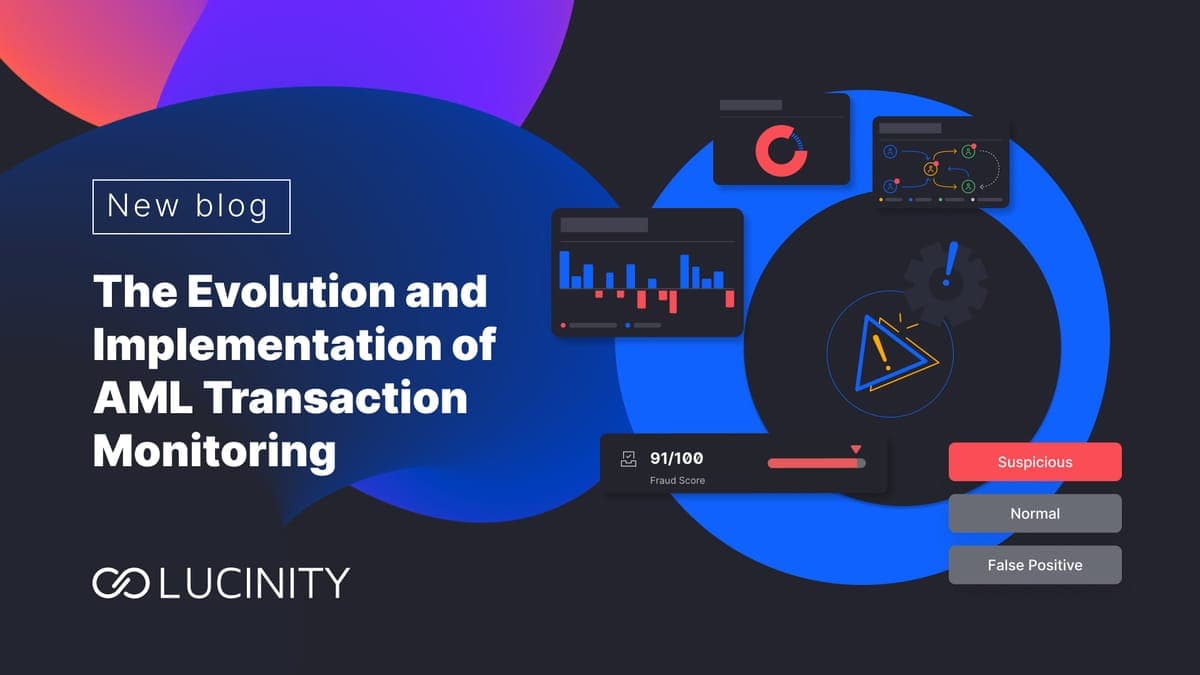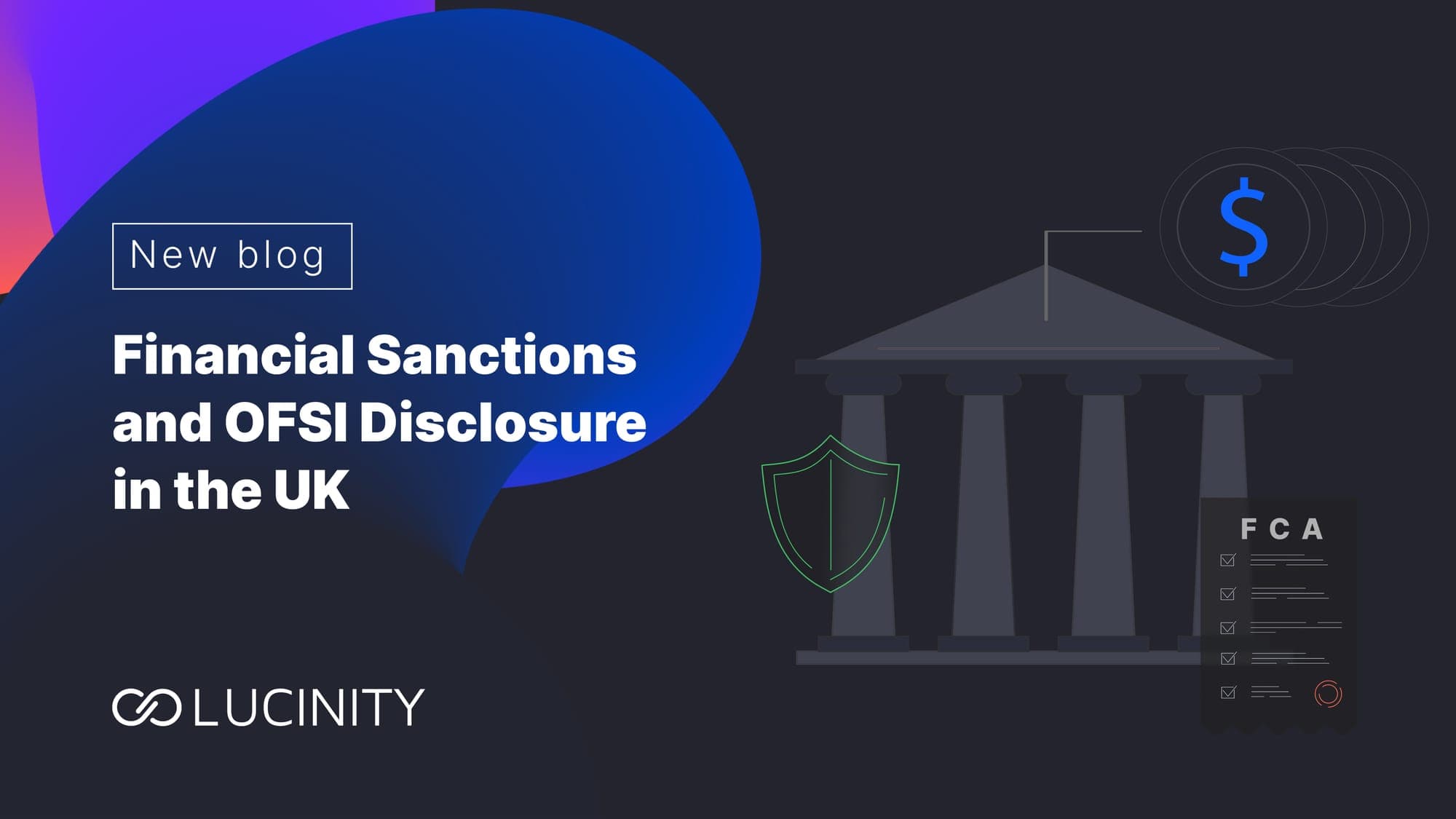Behind the Scenes: The FinCrime Investigation Process
Learn more about the financial crime investigation process. Understand their levels, complexities, and challenges, and discover how Lucinity's solutions help streamline the process.
In this blog, we cover a deep dive on FinCrime investigations, exploring their nature, varying levels and complexities, and the unique challenges they present. We will also discuss how Lucinity's intuitive solutions, like the Case Manager and Luci Copilot, are transforming these investigations.
What are FinCrime Investigations?
FinCrime investigations involve a detailed and multifaceted process. These investigations are complex and multi-layered, requiring several data sets in order to add context and clarity. These investigations start with the detection of unusual or suspicious activities and progress through various stages of analysis and verification. They encompass everything from basic data analysis to advanced forensic techniques, requiring a combination of investigative skills, regulatory knowledge, and technology.
FinCrime investigations follow a specialized approach, often tailored to the unique circumstances and risks associated with each case. The investigation process is vital for gathering evidence, revealing potentially illegal activities, and maintaining financial integrity.
Who Performs Them?
FinCrime investigations are conducted by a diverse array of professionals, encompassing law enforcement authorities, corporate investigation teams, and financial institutions' compliance departments. Here is a rundown of the key players that are involved in investigations:
- National Financial Intelligence Units (FIU) and Law Enforcement Agencies (LEA)- These include local police departments, federal investigators, and international law enforcement bodies. Their role is pivotal in cases where financial crimes cross the threshold into criminal activities. They are responsible for gathering evidence, conducting arrests, and working alongside prosecutors in legal proceedings.
- Compliance Departments in Financial Institutions- These departments have seen a significant evolution in recent years. Positioned within banks and other financial entities, they are responsible for ongoing monitoring of transactions and customer activities. Their focus is on identifying and reporting potential instances of money laundering, fraud, and other financial crimes.
With the advancement of technology, FinCrime investigations are increasingly relying on AI and data analytics. Tools such as transaction monitoring systems and AI-driven analytics play a crucial role in identifying patterns indicative of financial crimes. The future points towards a more integrated approach, where cross-functional teams comprising former law enforcement agents, data scientists, and compliance analysts collaborate to enhance the effectiveness of these investigations.
Overall, FinCrime investigations are a collaborative effort among various professionals, each bringing their expertise to combat financial crimes effectively. This multi-faceted approach ensures a comprehensive defense against illegal activities.
Different Levels of Complexity in Investigations
In the field of financial crime (FinCrime) investigations, the process is often structured into different levels of complexity. This stratification is particularly evident in large financial institutions (FIs), where the scale and complexity of operations necessitate a tiered approach. Here is a detailed breakdown:
Level 1: Initial Processing of Alerts
This is the first line of defense in FinCrime investigation. At this level, alerts generated by monitoring systems are reviewed. These alerts might be triggered due to unusual transactions or activities that deviate from a customer's typical behavior.
The primary task in this level is to determine whether these alerts represent legitimate concerns or false positives. A significant portion of alerts are often resolved at this level without needing further escalation.
Oftentimes, companies are looking for ways to reduce their false positives and increase the detection of true positives. Systems such as an effective Transaction Monitoring system can address this, with a combination of both rules-based and AI-based approaches available.
Level 2: Enhanced Investigation
Alerts that are not resolved at Level 1 are escalated to Level 2. Here, the investigation is more detailed, involving a deeper analysis of the transaction or activity in question.
Investigators at this level have more expertise and access to a wider range of data and tools to understand the context and the risk involved. The aim is to gather enough information to either clear the alert or escalate it further.
Level 3: High-Complexity Investigation and Reporting
The most complex cases are handled at Level 3. This level deals with situations where there is a substantial suspicion of criminal activity. Investigators at this stage are highly skilled and may work in close coordination with legal teams and senior management.
The critical task at this level is the preparation and filing of Suspicious Activity Reports (SAR) or Suspicious Transaction Reports (STR) to the relevant Financial Intelligence Unit (FIU), like the National Crime Agency in the UK. These reports are made based on the available data and a reasonable suspicion that the activity under investigation is criminal in nature.
The effectiveness of this multi-level approach lies in its ability to filter and manage alerts efficiently, ensuring that resources are focused on the most serious cases, while minimizing the impact of false positives. This tiered system not only streamlines the process but also ensures that investigations are conducted with the appropriate level of scrutiny and expertise.
The Investigative Process
The stages or process of FinCrime investigations form a comprehensive framework for tackling financial crimes. Each stage builds on the previous one to create a robust defense against financial misconduct. These stages in the FinCrime investigation process are:
- Detection and Reporting- The first stage is crucial for the early identification of potential financial crimes. It involves vigilant monitoring of transactions and customer activities to detect anomalies or suspicious behaviors. Financial institutions utilize monitoring systems, customer due diligence processes, and internal reporting mechanisms like whistleblowing to uncover possible issues. The primary goal at this stage is the early detection of financial crimes.
- Analysis and Investigation- Once suspicious activity is reported, the focus shifts to a thorough investigation. This stage employs various investigative tools and techniques, such as data analytics, AI, and forensic accounting, to scrutinize the reported activities in depth. The aim is to understand the nature, scope, and consequences of the suspected financial crime, identifying both perpetrators and victims.
- Response and Resolution- This stage deals with addressing the identified financial crime e.g. through regulatory reporting in the FI’s case. For other actors, typically in the public sector, this entails enacting legislation and regulation enforcement such as Sanctions list and updating regulation. The goal here is to mitigate the damage caused by the crime, recover losses, and prevent similar incidents in the future. In this stage, stronger efforts are needed in areas such as Asset Recovery.
- Prevention and Improvement- The final stage focuses on refining the overall FinCrime investigation process. This involves adopting risk management frameworks, establishing strong governance structures, conducting training programs, and setting performance indicators to enhance the effectiveness and efficiency of FinCrime investigations. The overarching objective is to foster a culture of compliance and integrity across all management levels, thereby reducing the likelihood of future financial crimes.
Each stage is integral to the effective management and resolution of financial crimes, ensuring a comprehensive approach from detection to prevention.
Challenges Affecting Investigations
The challenges associated with FinCrime investigations are numerous and complex, reflecting the sophisticated nature of financial crimes in today's digital and globally interconnected economy. Let’s consider some key challenges faced during investigations:
- Data Complexity and Volume- One of the biggest challenges is the sheer volume and complexity of data. Financial institutions process vast amounts of transactions daily, making it difficult to identify suspicious activities. The complexity is further compounded when transactions span multiple jurisdictions with varied regulatory requirements.
- Evolving Nature of Financial Crimes- Financial crimes are constantly evolving, with criminals employing increasingly sophisticated methods to evade detection. This requires investigators to constantly update their knowledge and tools, a task that is both time-consuming and resource-intensive. This can be achieved by the drafting and ongoing updating of Financial Crime Typology libraries.
- Technological Limitations- While technology plays a crucial role in FinCrime investigations, it also presents challenges. Many financial institutions still rely on legacy systems based on rigid detection rules or that are not equipped to handle modern data analytics. Even when advanced technologies are in place, they may generate a high number of false positives, which can overwhelm investigation teams.
- Regulatory Compliance Issues- Navigating the complex web of international regulations and compliance requirements is a significant challenge. Compliance teams must stay updated with changing laws and ensure that their investigation processes meet all legal standards, a task that becomes more daunting with cross-border transactions and in the light of stricter data protection regulations.
- Resource Constraints- FinCrime investigations require specialized skills and resources. However, many organizations face limitations in terms of staffing, budget, and training, which can hinder effective investigation and compliance efforts.
- Collaboration and Information Sharing- Effective FinCrime investigations often require collaboration between various entities, including financial institutions, law enforcement, and regulatory bodies. However, information sharing can be hampered by privacy concerns, jurisdictional boundaries, and differences in operational procedures.
These challenges necessitate a multifaceted approach, combining advanced technology, skilled personnel, robust processes, and strong regulatory compliance to effectively combat financial crimes.
For example, Project Aurora, a collaboration between the BIS Innovation Hub's Nordic Centre and Lucinity, is a proof of concept focused on combating money laundering that integrates payment data, privacy-enhancing technologies, AI, and cross-border cooperation. This project demonstrates the effectiveness of comprehensive data analysis and strong public-private partnerships in financial crime investigations.
How Lucinity Can Help With Investigations
Lucinity's Case Manager and Lucinity's Luci Copilot, powered by generative AI, represent a significant advancement in financial crime investigations, offering a blend of simplified data analysis, streamlined workflows, and secure AI development. Here's how Lucinity helps enhance the FinCrime investigation process:
Case Manager: Streamlining Investigations
- Simplification of Review Processes- The Case Manager simplifies complex review processes in financial crime investigations, uncovering hidden narratives and enabling swift, confident decision-making.
- Enhanced Case Review and Data Transformation- It transforms raw data into actionable insights, providing easy-to-understand stories that highlight crucial case details, crucial for tackling large data volumes and complex information.
- Streamlined Workflow and Collaboration- Accelerates reviews and fosters seamless collaboration, enhancing the productivity of investigation teams and leading to more efficient outcomes.
- Configuration and Integration Capabilities- Offers customization and integrates seamlessly with third-party systems, optimizing existing systems and enhancing team performance.
Luci Copilot: Empowering Investigations with AI
- Unlocking Information- Features instant summarized searches, gathering the right data and providing clear risk insights, transforming large data volumes into actionable information.
- Guidance and Clarification- Clarifies complex terminologies and elucidates behind-the-scenes calculations, aiding investigators in making informed decisions.
- Enhancing Reporting- Aids in writing detailed regulatory reports efficiently and accurately, ensuring compliance with regulatory standards.
- Security and Trust- Developed with Lucinity's proprietary technology and Microsoft's Azure OpenAI, ensuring secure and responsible AI development.
The combination of Lucinity's Case Manager and Luci Copilot provides comprehensive support in FinCrime investigations. These tools enable more effective and efficient financial crime investigations, aligning with the objectives of regulatory bodies for comprehensive and effective financial crime prevention.
Conclusion
FinCrime investigations are evolving, with a growing emphasis on collaboration, advanced analytics, and AI-assisted tools. Lucinity's innovative solutions, such as Lucinity’s Case Manager and the Luci Copilot, are at the forefront of this transformation. Learn more about Lucinity and how we can help you upgrade the speed and efficiency of your financial crime investigations.


